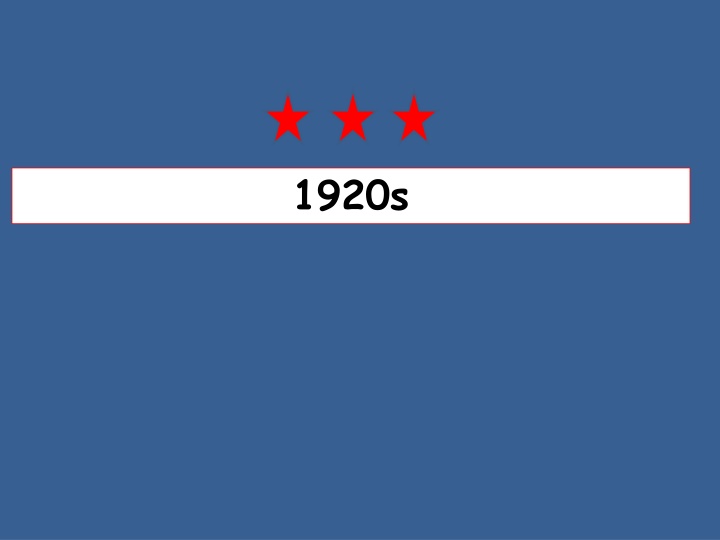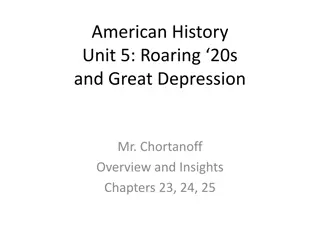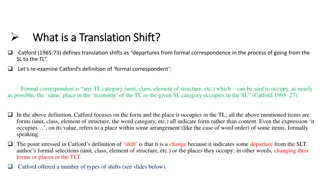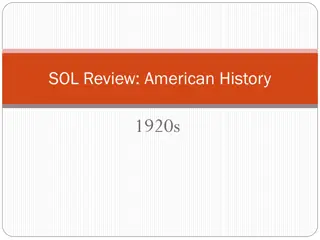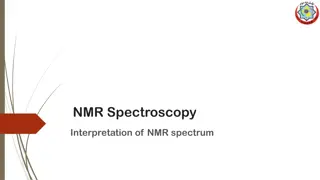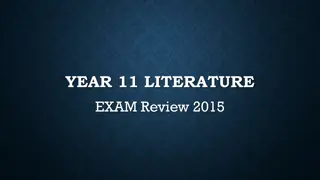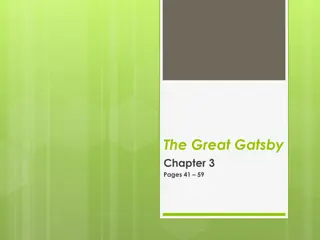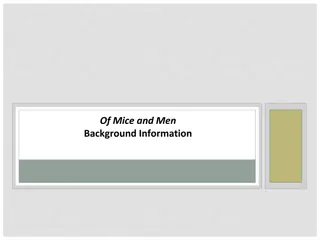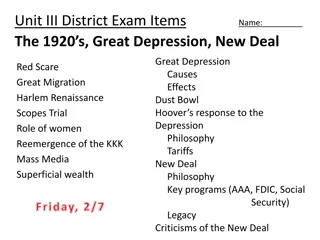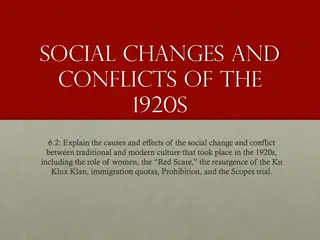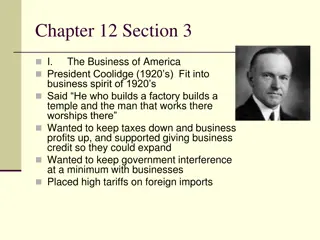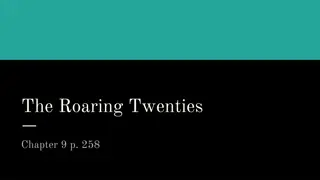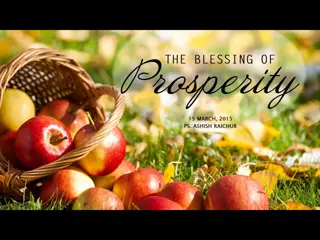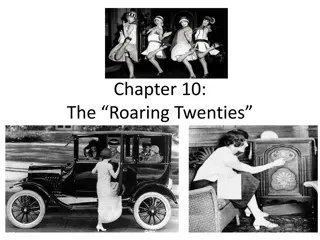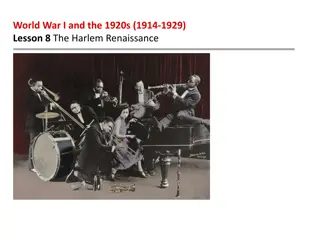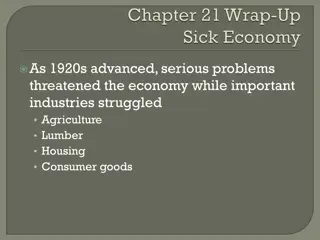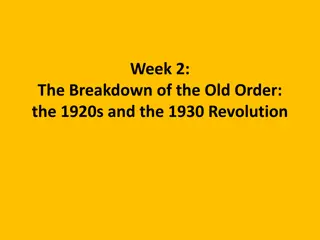The Roaring Twenties: Politics, Prosperity, and Cultural Shifts in the 1920s
The 1920s marked a period of significant change in American society. Republican presidents like Warren G. Harding, Calvin Coolidge, and Herbert Hoover shaped policies focused on returning to normalcy, economic growth, and individualism. The era saw a surge in prosperity driven by the rise of automobiles, new industries, and efficient production techniques. Cultural values also shifted, with attempts to preserve traditional values through Prohibition and new restrictions on immigration, while new values emerged, such as women's independence, youth rebellion, and the Harlem Renaissance. Key individuals like Sacco and Vanzetti, Henry Ford, and Clarence Darrow played significant roles in shaping the decade.
Download Presentation

Please find below an Image/Link to download the presentation.
The content on the website is provided AS IS for your information and personal use only. It may not be sold, licensed, or shared on other websites without obtaining consent from the author.If you encounter any issues during the download, it is possible that the publisher has removed the file from their server.
You are allowed to download the files provided on this website for personal or commercial use, subject to the condition that they are used lawfully. All files are the property of their respective owners.
The content on the website is provided AS IS for your information and personal use only. It may not be sold, licensed, or shared on other websites without obtaining consent from the author.
E N D
Presentation Transcript
THE REPUBLICAN PRESIDENTS (20s) WARREN G. HARDING -Sought a return to normalcy after WWI -Teapot Dome Scandal and others CALVIN COOLIDGE -No right to strike against the public safety -Believed business of America is business HERBERT HOOVER -Engineer who organized food production in World War I; Secretary of Commerce -As President, predicted an end to poverty -Believed in rugged individualism -Felt government interference should be minimal in the economy
REASONS FOR PROSPERITY OF 1920s RISE OF AUTOMOBILE -Cars allowed greater mobility to people -Model T priced at less than $300 OTHER NEW INDUSTRIES -Electricity and electric appliances -Radio, motion pictures, vacuum cleaners MORE EFFICIENT PRODUCTION TECHNIQUES -Assembly line -Standardized parts AGE OF MASS CONSUMPTION -Advertising stimulated demand _Retailers introduced installment buying
CULTURAL VALUES OF THE 1920s ATTEMPTS TO PRESERVE TRADITIONAL VALUES PROHIBITION -18TH Amendment banned alcoholic drinks -Social experiment was a failure. (21st amendment ended Prohibition) Scopes Monkey Trial (1925) -Pitted traditional Fundamentalist values against Darwin s Theory of Evolution -William Jennings Bryan v. Clarence Darrow New Restrictions on Immigration -Growth in nativist sentiment -Immigration Acts of 1921, 1924, 1929
EMERGENCE OF NEW VALUES IN 1920s WOMEN -19TH Amendment; flappers, greater independence; new morals and manners YOUTH AND LOST GENERATION -Fads: flagpole sitting, marathon dancing -Rejected desire for material wealth -Sinclair Lewis and F. Scott Fitzgerald HARLEM RENAISSANCE New optimism and growth of African-American culture -Langston Hughes: Poet and novelist -Alain Locke: Black historian -Marcus Garvey: Leader of Back to Africa Movement
KEY INDIVIDUALS SACCO AND VANZETTI -Convicted and executed of a robbery in part because of the hysteria against foreigners HENRY FORD -Early auto manufacturer who pioneered new production techniques GLENN CURTISS -Aviation pioneer who developed airplanes that landed on water FRANCES WILLARD -Active in the Temperance and Woman s Rights Movement CLARENCE DARROW -Represented Scopes at the Monkey Trial on evolution in 1925
MORE KEY INDIVIDUALS WILLIAM JENNINGS BRYAN -Helped prosecute John Scopes at the Monkey Trial LANGSTON HUGHES -African-American poet and writer during Harlem Renaissance MARCUS GARVEY -Believed in black-owned businesses; led Back-to Africa Movement CHARLES LINDBERGH -First person to fly solo across Atlantic Ocean; became an international hero F. Scott Fitzgerald -His works like The Great Gatsby, captured the spirit of the Jazz Age
ONE LAST NOTE EUGENICS -A Pseudo (fake)-scientific belief that the human race could be improved by breeding TIN PAN ALLEY -a section of New York City that became the center for song writing, Publishing, and musical ideas.
Which management innovation helped Henry Ford to realize his vision? a)providing various models of cards b)creating a business monopoly c)downsizing the labor force d)using assembly line production methods
The executions of Sacco and Vanzetti in the 20s demonstrated the a)Federal government s war on crime b)The persistence of lynchings c)Corruption of political machines d)Increase in nativist attitudes
Prohibition, established by the 18th amendment, stated that a)Only imported alcoholic beverages could be sold b)The manufacture and sale of alcoholic beverages was banned c)Americans must be 21 to purchase alcohol d)Alcohol could be sold in government-run stores only
The location of music publishing industry in New York City was located here a)Rockefeller Center b)Empire State Building c)Brooklyn Bridge Park d)Tin Pan Alley
This 1920s cartoon shows attempts of the U.S. government to deal with the issue of a)Foreign trade b)Transportation gridlocks c)Immigration d)Foreign invasion
